How to Spend Two Perfect Days in Madrid
Madrid was one of our stops in our 4-week road trip in Spain. If you’re considering traveling to Madrid, it’s worthwhile to take the time to explore this vibrant city and fully experience its rich culture.
Madrid was one of our stops in our 4-week road trip in Spain. If you’re considering traveling to Madrid, it’s worthwhile to take the time to explore this vibrant city and fully experience its rich culture.
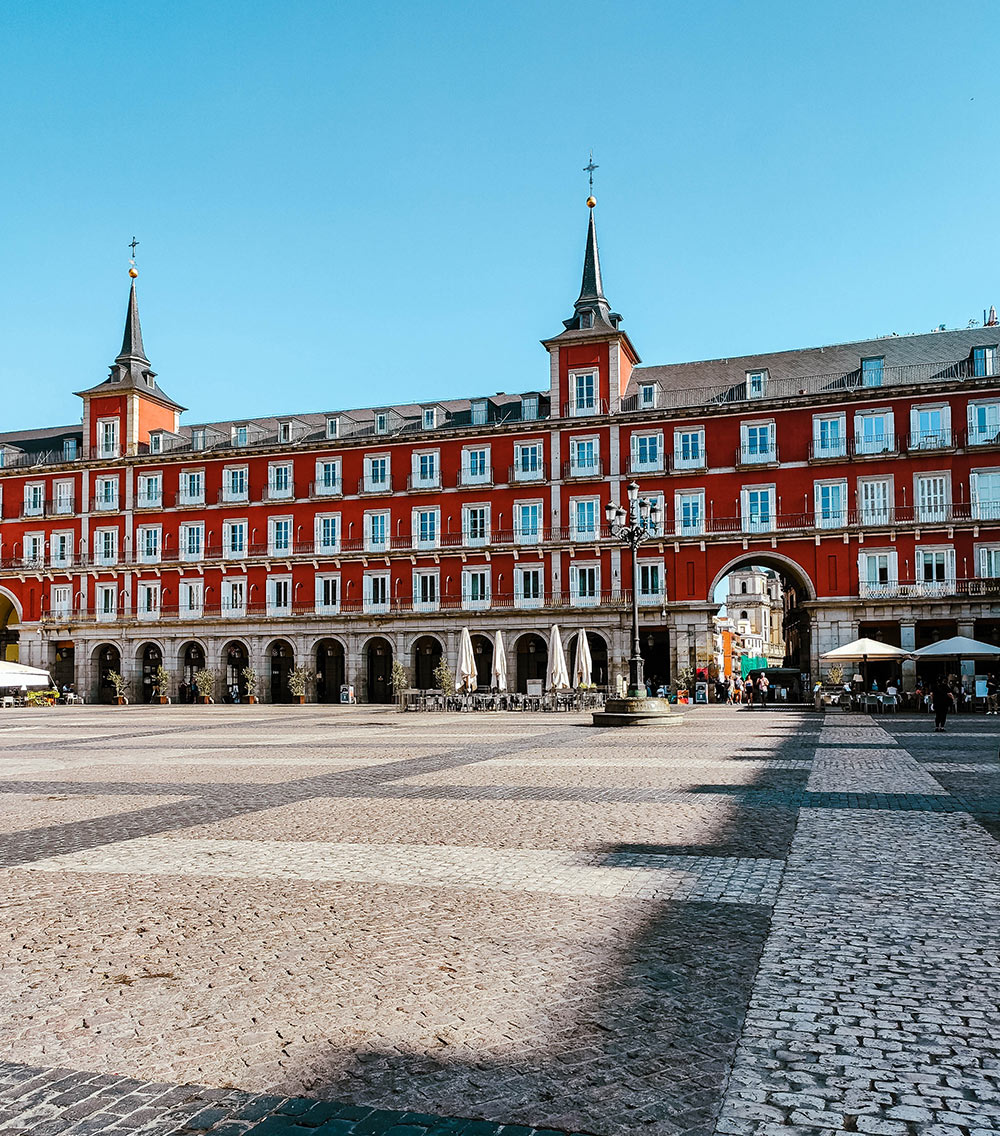
Madrid is a large city, so it may take 4 to 5 days to see everything, but if you only want to see the highlights, two days in Madrid are plenty of time to see the lively city, especially if you’re there for a weekend getaway. It might be challenging to create an itinerary because there is so much to see and do, but don’t worry! With the help of our “Two Perfect Days in Madrid” guide, you’ll be able to take advantage of everything that the city has to offer.
Madrid is the fourth-biggest metropolis in Europe and the largest city in Spain, with a population of over 3 million. The Royal Palace of Madrid, the Puerta del Sol, and the Plaza Mayor are a few of Madrid’s most recognizable monuments. Several of the best art institutions in the world, including the Prado Museum and the Reina Sofia Museum, are located in the city. Madrid is a wonderful destination all year round due to its Mediterranean environment, which features scorching summers and pleasant winters. Madrid’s official language is Spanish, although many residents also understand English, making it simple for visitors to navigate and interact.
Madrid is the capital and largest city of Spain.
Madrid is the third-largest city in the European Union after London and Berlin.
Madrid has a Mediterranean climate, with hot summers and mild winters.
The city is famous for its food, especially its tapas and paella.
The Madrid-Barajas Airport is the largest airport in Spain and one of the busiest in Europe.
The city is home to some of the world’s top art museums, including the Prado Museum and the Reina Sofia Museum.
The largest and busiest airport in Spain and one of the busiest in all of Europe, Madrid-Barajas Airport, serves the city. The airport, which is 13 km (8 miles) northeast of the city center, provides direct flights to a large number of foreign locations in addition to Spanish domestic flights.
Atocha and Chamartin, Madrid’s two principal railway stations, are both situated in the heart of the city. Madrid is connected to several other Spanish cities as well as some foreign cities like Paris and Lisbon via the AVE, Spain’s high-speed rail system.
The Estacion Sur, a contemporary bus terminal in Madrid, is situated in the city’s southern region. Several domestic and foreign cities, such as those in Portugal, France, and Morocco, are served by the station.
Highway connections make it simple to drive to Madrid from other regions of Spain or from nearby nations. Yet, due to the dense traffic and few parking, driving in the city center might be challenging.

Plaza Mayor is a royal plaza in the center of Madrid and was initially constructed in the 16th century. It has seen bullfights, coronations, and even executions over the years. Nowadays, it is a pedestrianized area with a variety of cafés, restaurants, and gift stores as well as year-round cultural events and celebrations.
The Plaza Mayor’s design, which is distinguished by a collection of three-story residential structures with balconies overlooking the plaza, is one of its most distinctive aspects. The area is lined with several outdoor cafés and restaurants where visitors may have a meal or drink.
The Christmas market, which takes place in December and provides a variety of holiday decorations and handcrafted products, is one of the most well-liked events conducted in the Plaza Mayor. The San Isidro festival in May, which honors Madrid’s patron saint and offers live music, dance performances, and other cultural events, is another well-liked occasion.
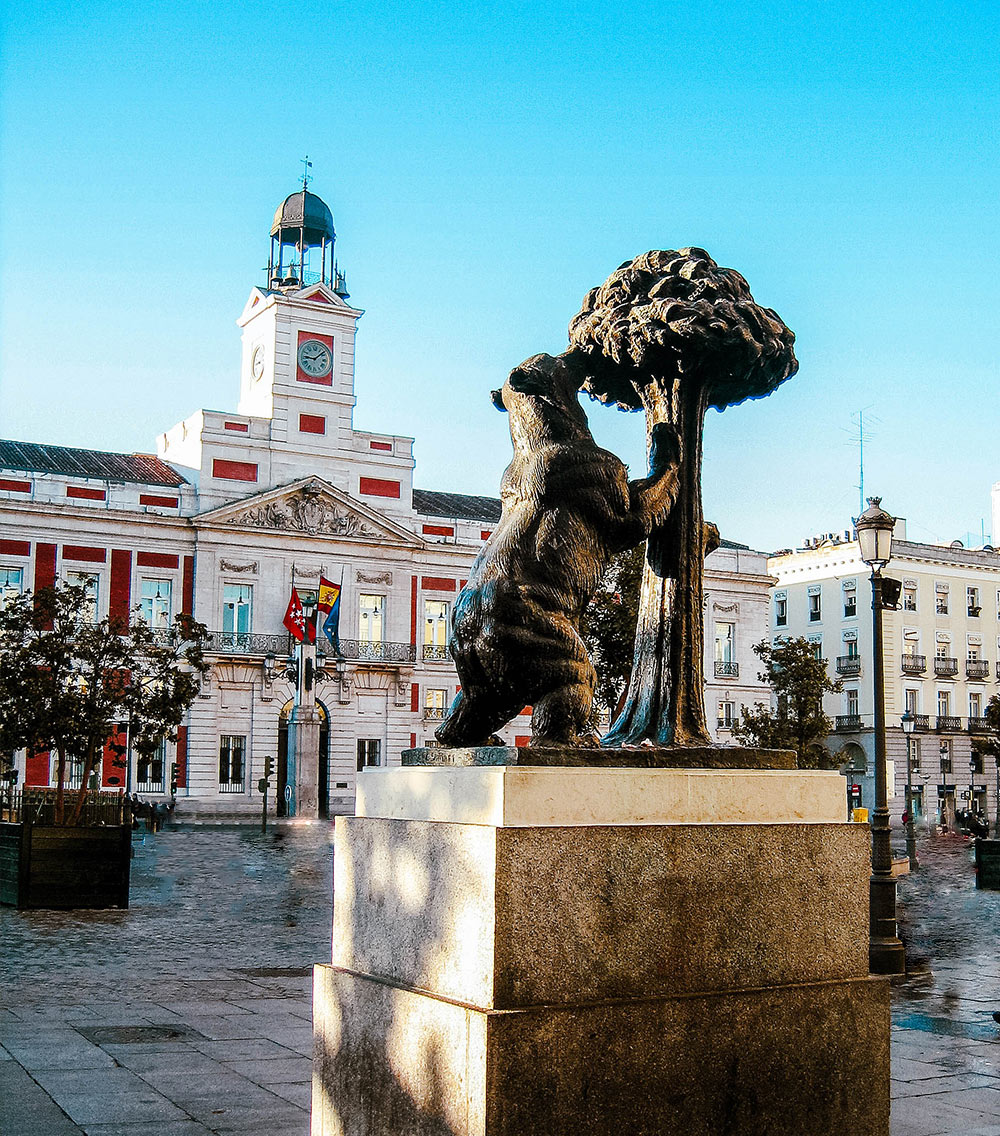
Also known as the “Kilometer Zero” of Spain since it is the starting point of all of the nation’s major roadways. The area, which is located in the heart of Madrid, is surrounded by a wide range of old structures, stores, and eateries.
One of the most known landmarks in the Puerta del Sol is the clock tower that sits atop the Casa de Correos building. This clock is popular for its countdown on New Year’s Eve. Other several noteworthy landmarks are the bear monument and the strawberry tree, which serves as Madrid’s emblem. In addition, on the eastern side of the square, you can find the equestrian monument of King Carlos III, which was built in the late 18th century.
Puerta del Sol is also a favorite spot for shopping and dining. The area is bordered by a wide range of retailers, from upscale boutiques to gift shops, and there are many cafes and restaurants that serve both traditional Spanish food and other cuisines from across the world.
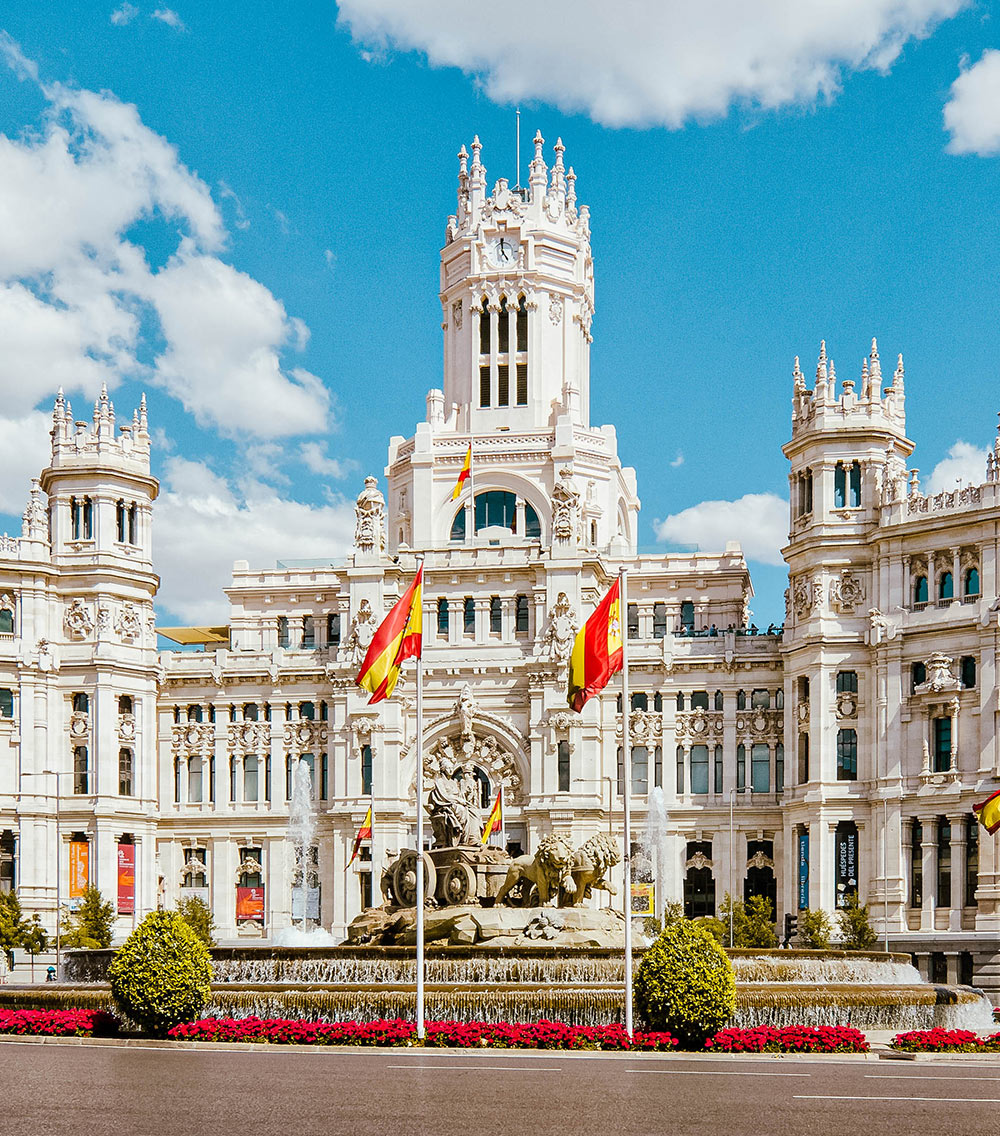
The Madrid City Hall is located in the Plaza de Cibeles, a grand square that is considered to be one of the most iconic locations in the city. It was designed by architect Antonio Palacios in the early 20th century.
One of the most notable features is its clock tower, which stands over 50 meters tall and is visible from many points in the city. The clock tower chimes every hour and is a favorite symbol of the city.
It also houses the Madrid City Council and is home to the offices of the Mayor of Madrid and other city officials.
The Madrid City Hall is open to the public and offers guided tours that allow visitors to explore the historic building and learn more about the city’s government and history. The tours are available in many languages and provide an interesting and informative look at the inner workings of the city.
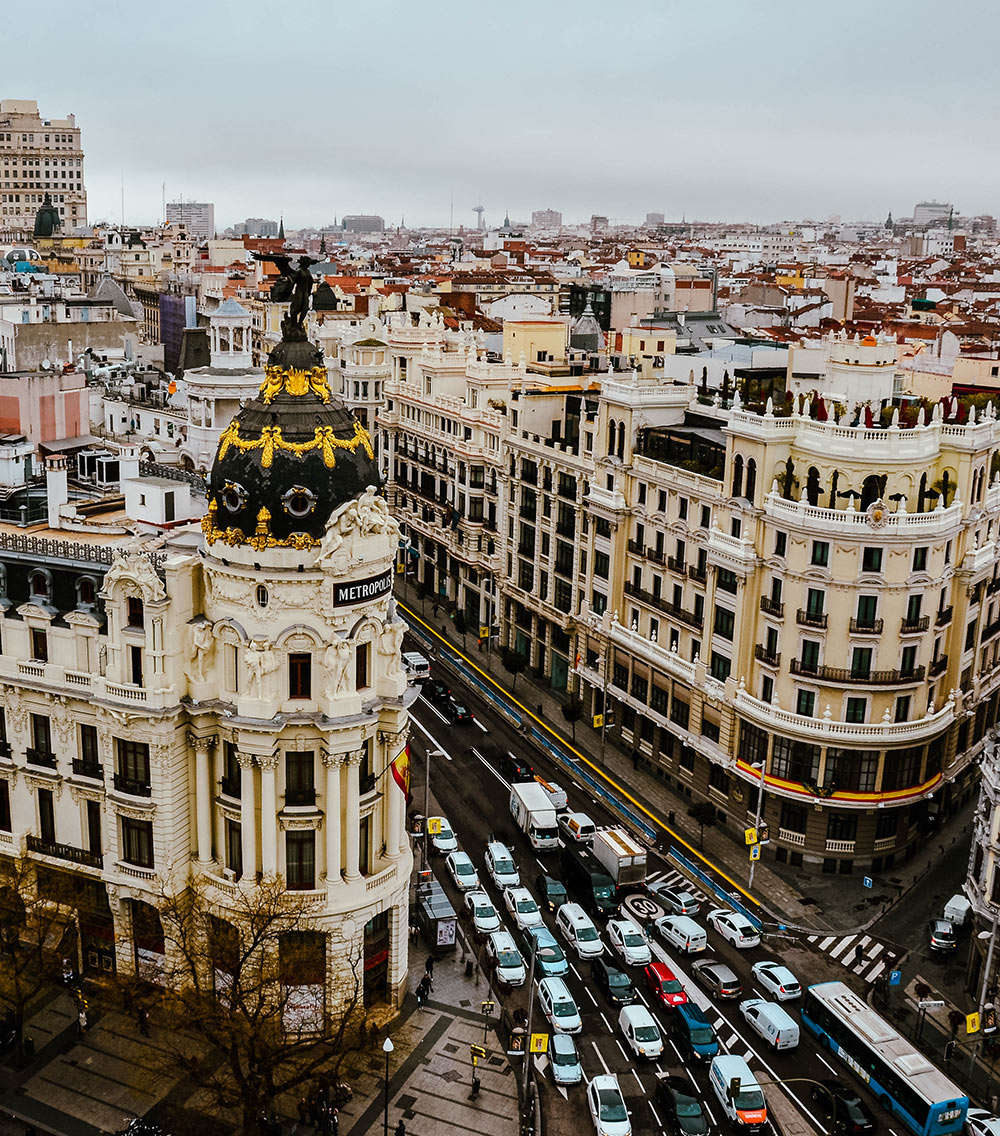
If you are thrilled about panoramic views, this is your place! Circulo de Bellas Artes is a cultural center in Madrid that is famous for its beautiful rooftop terrace. It offers a 360-degree panoramic view that allows visitors to see the entire city. From there famous landmarks can be seen such as the Gran Via, Plaza Mayor, and the Royal Palace.
The terrace is open from midday to midnight (Monday to Friday 9 am to 10:30 pm; Weekends 11 am to 10:30 pm), and visitors can enjoy drinks and snacks as well as take some beautiful pictures.
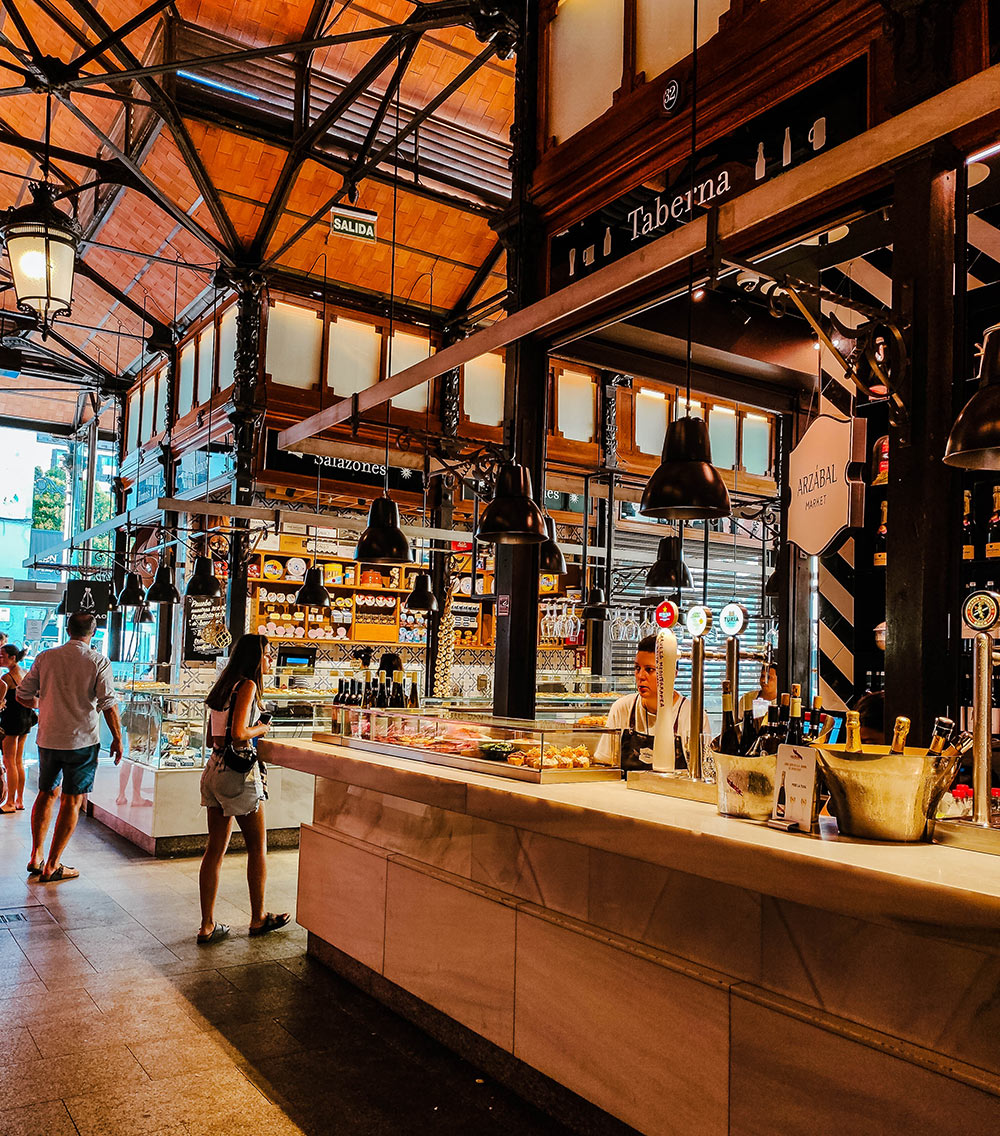
With over two dozen stalls the so-called “Mercado de San Miguel” is the most famous food market and if you love tapas, you will not be disappointed a visit there.
We got some of the most incredible croquettes, and some mozzarella on bread, and both were excellent. Be sure to sample the Jamon. Thanos loved it 😛
Do not forget to try:
Paella in Paella Power – Price: €10 for the smallest serving,
Pintxos or else Pinchos in Amaiketako – Price: €3.00 – €3.50 per pincho,
Patatas Bravas in Arzábal – Price: €7 for a plate,
Salt Cod in La Casa del Bacalao – Price: €1.00 to €1.50,
Vermouth in La Hora del Vermut – Price: €2 for the vermouth on tap.
Other food markets worth visiting are Mallorca Market, Mercado de San Anton, Mercado de la Paz, Platea, and Mercado de San Ildefonso.
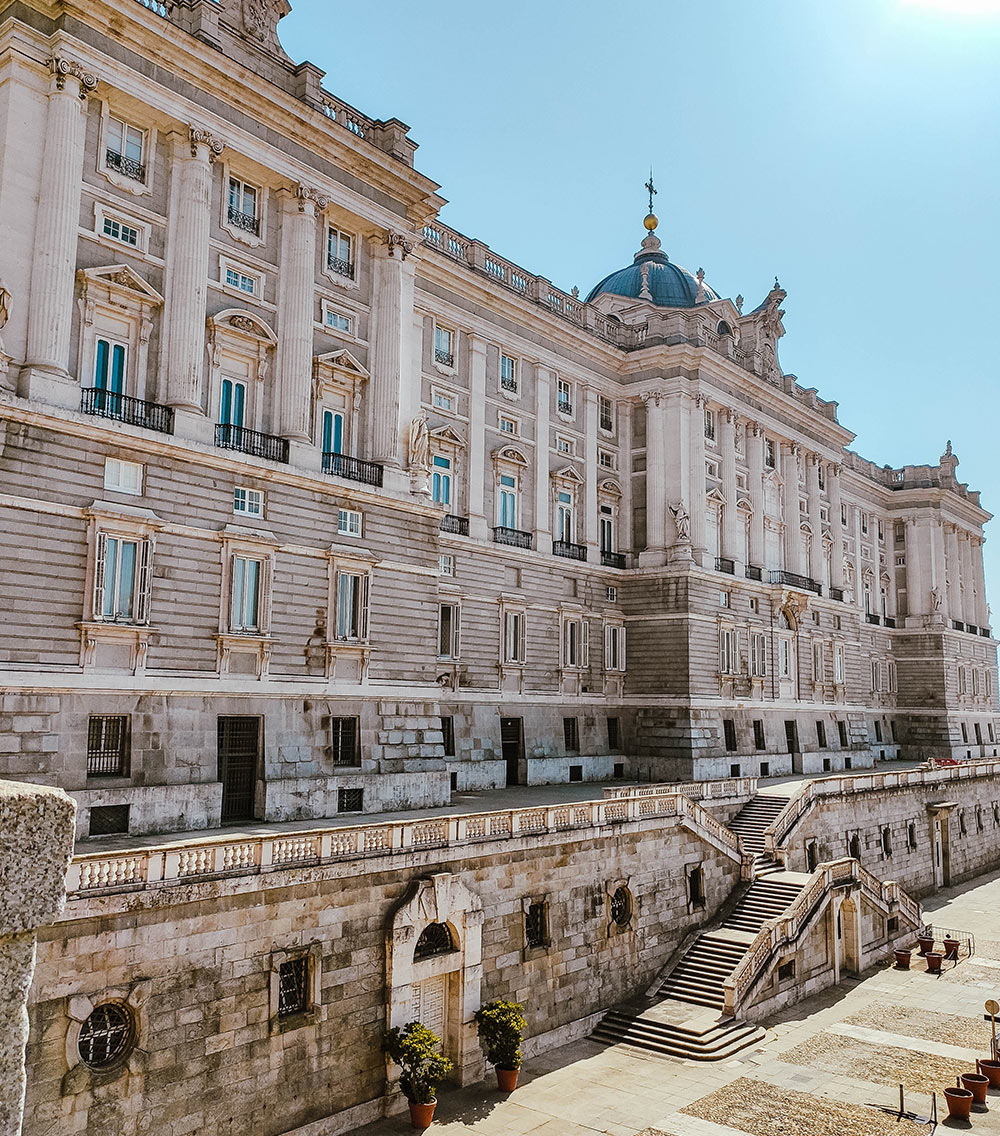
Philip V commissioned the construction of Madrid’s Royal Palace in the 18th century on the site of the ancient Alcázar fortress, a historic Moorish castle. With a floor area of 199,000 square meters, the royal palace in Madrid contains an astounding 3,748 rooms. In fact, this is the biggest palace in Western Europe.
The construction was started by Sachetti in 1738, and it was finished in 1764. While it is the royal family of Spain’s official palace, they only use it for state ceremonies and do not live there permanently.
Monday to Saturday: 10:00 AM to 06:00 PM (final entry at 05:00 PM)
Sunday and public holidays: 10:00 AM to 04:00 PM (final entry at 03:00 PM).
The gardens are open from 10:00 AM to 06:00 PM every day of the week.
General Ticket: €10
Reduced ticket: (large families, children aged between 5 and 16 years old, pensioners, students under 25 years old): €5
Free entry: children under 5 years old.

It is Madrid’s most well-known street. Its construction was one of the most challenging urban constructions in Spain as it was necessary to demolish over 300 buildings and 50 streets. The Gran Va avenue project took several years to complete. The street’s original designs were created in 1862, during a renovation of a portion of the city center. The architects José López Salaberry and Francisco Octavio Palacios did not deliver the final design until 1899, and the boulevard was not finished until 1929.
As a result of this road, the city center and the region of Madrid to the northeast were better connected.
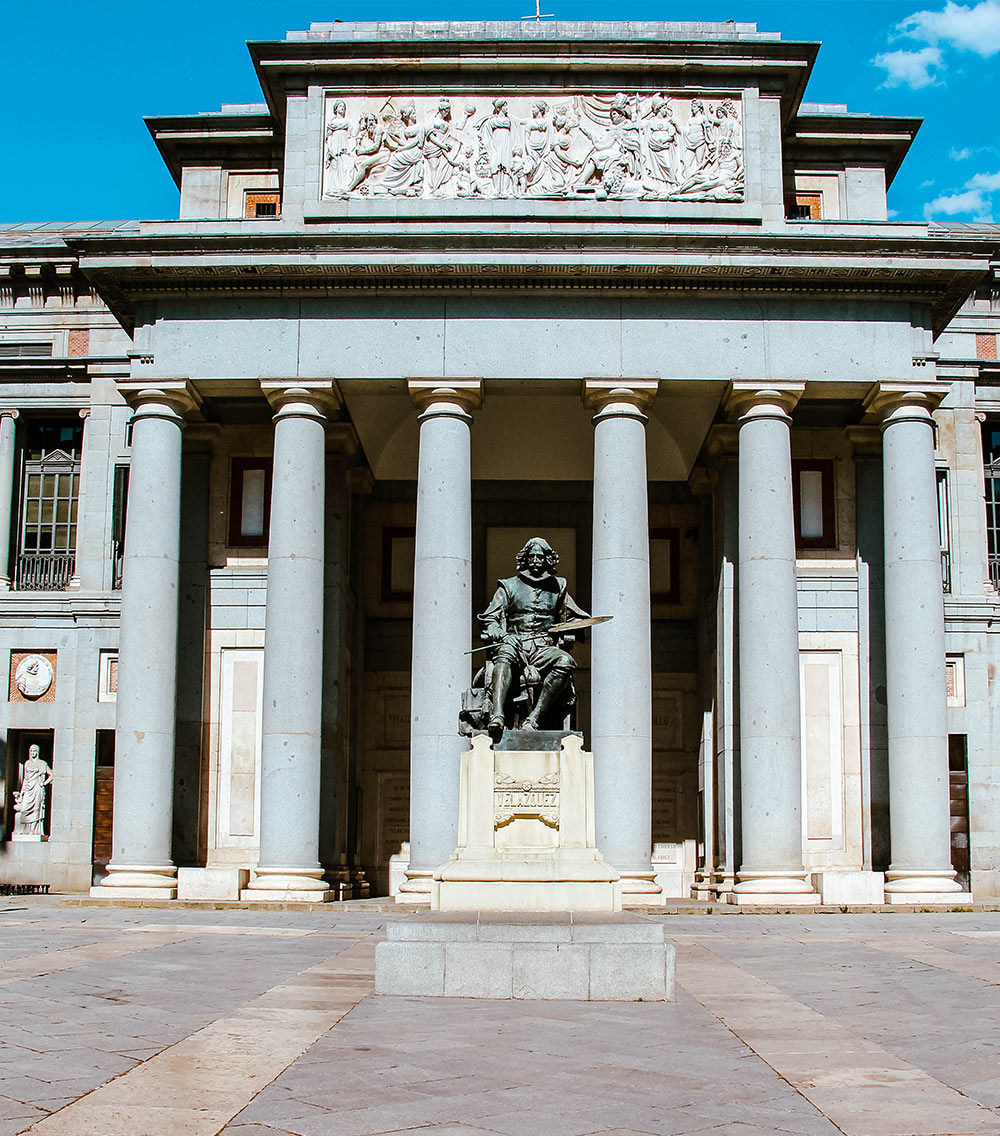
It is one of the world’s finest art museums since it houses a collection of European art from the 12th century to the early 20th century, including works by El Greco, Velázquez, Francisco de Goya, and other Spanish masters.
The opening day for the Prado Museum was November 10, 1819. The Juan de Villanueva-designed structure was initially intended to be a house of science, but King Ferdinand VII ultimately opted to utilize it as a museum to house the imperial artworks after being persuaded by his wife Maria Isabel of Braganza. Years of individual purchases and gifts resulted in significant growth of its collection.
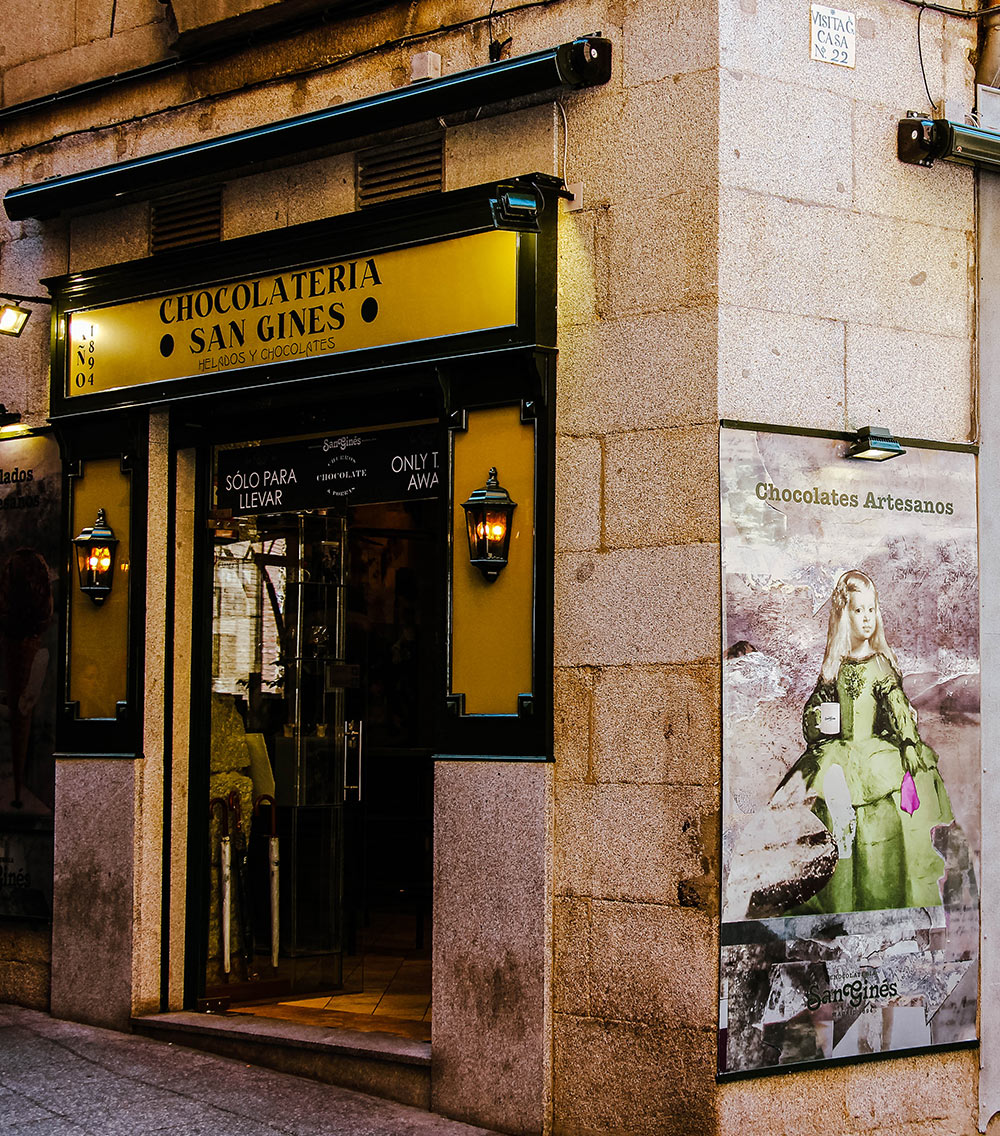
A churro is a type of fried dough from Spanish and Portuguese cuisine, made with choux pastry dough piped into the hot oil. The ideal churro has a distinct crunch when one bites into it, but the interior should have a slight softness at the center.
Chocolate and churros are one of the most well-liked breakfast combinations in the city, and San Gines, Madrid’s most well-known chocolate shop, provides both. Although San Gines started selling its famous chocolate and churros in 1894, the structure goes back to 1890 when it was first constructed as a restaurant and inn.
Having tasted both the hot chocolate and churros, we can definitely say that they were both excellent. While a little thinner, the hot chocolate has a consistency that is more similar to melted chocolate. The hot chocolate and churros combination was not overly sweet.
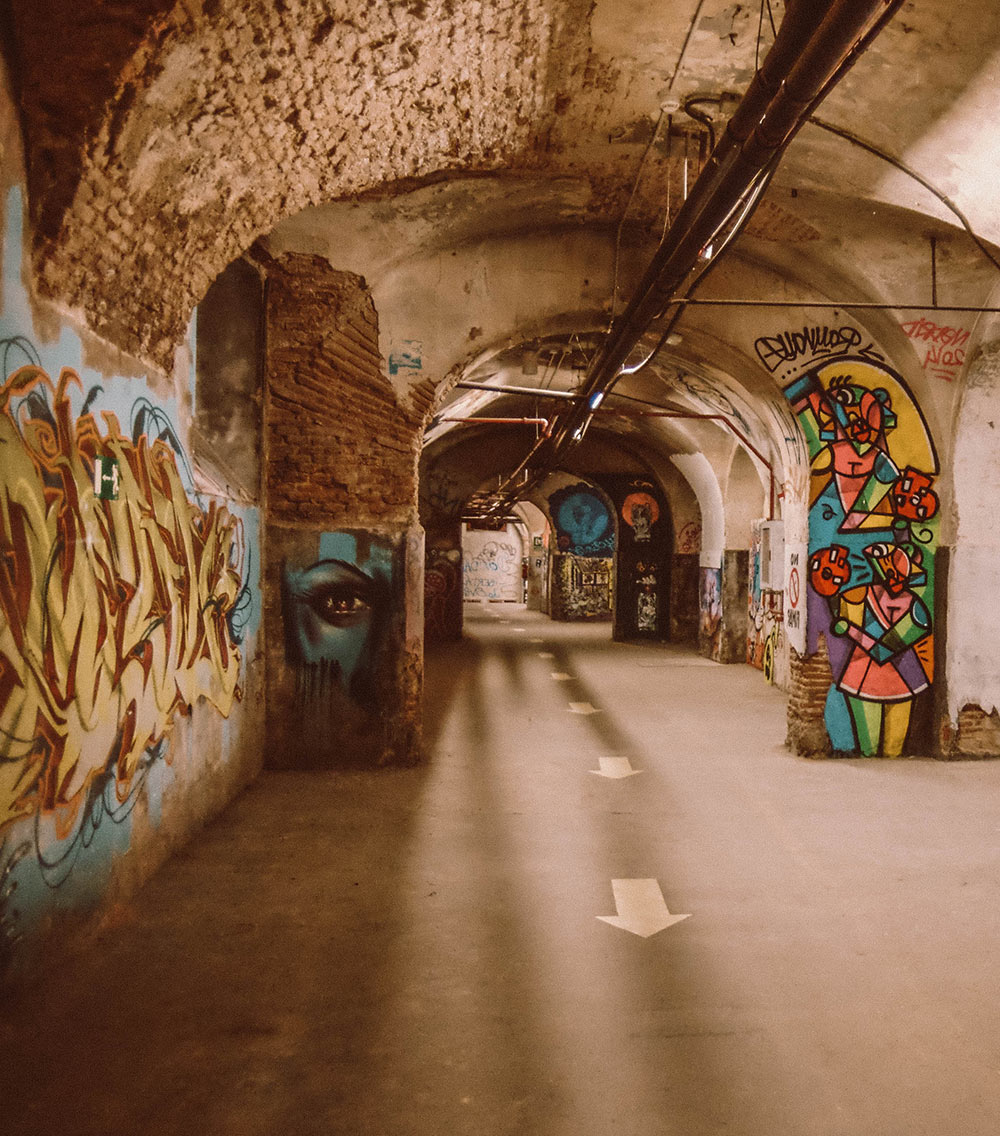
As the name implies, what was formerly a tobacco factory, hosts now some of the city’s most exciting art.
The four-story structure, which was constructed in 1790, was one of Madrid’s early instances of industrial architecture and significant employment for many of the Lavapiés working-class residents. From 1809 until the end of the 20th century, it was known as the Tobacco and Snuff Factory. The building was taken over by Spain’s Ministry of Culture in 2003, and residents transformed it into a bustling cultural hub where they staged exhibitions of artwork, held seminars, and held concerts. As well, a community garden was created.
It is divided into two parts: La Tabacalera ‘Promoción del arte’, a contemporary cultural center, and CSOA La Tabacalera, a local community space.
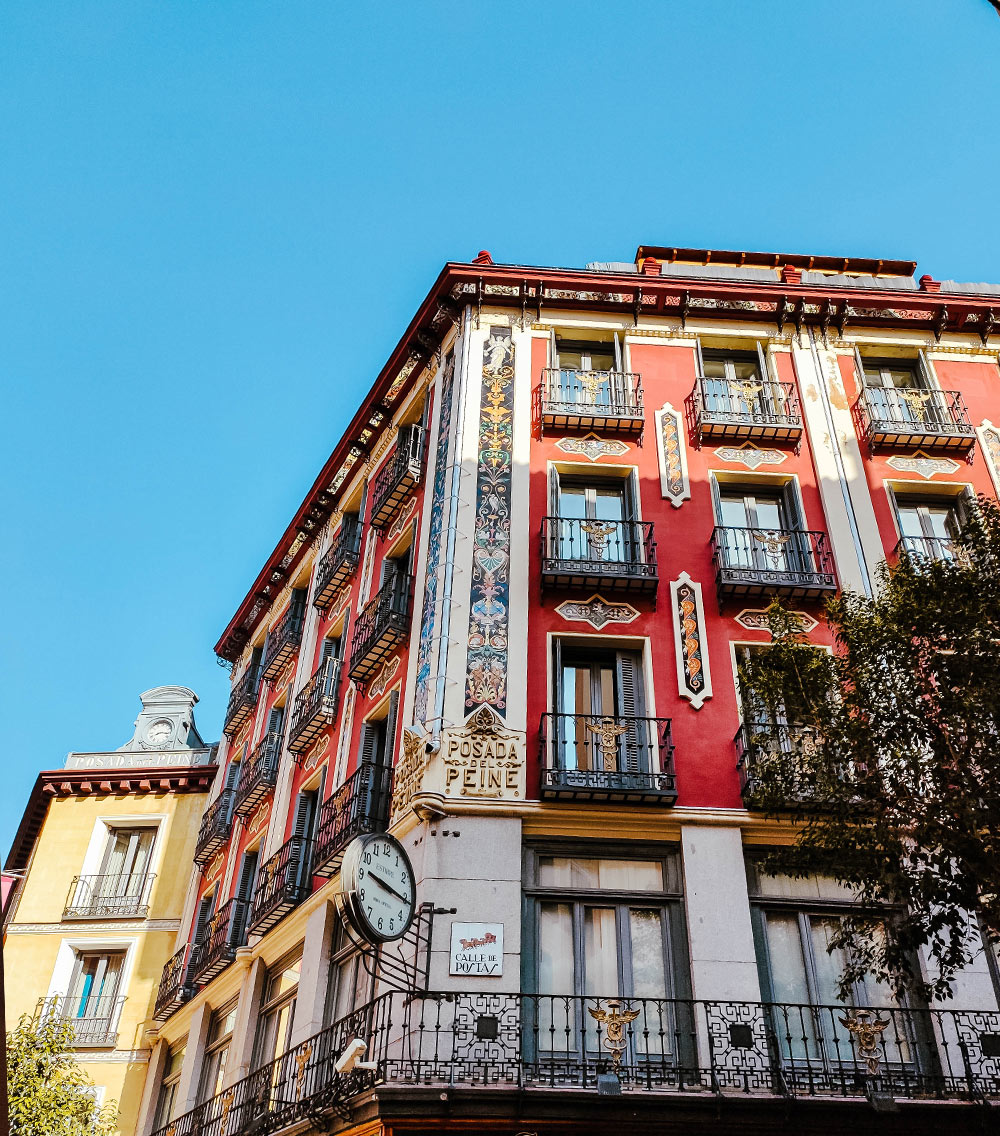

One of Madrid’s neighborhoods that is the most really authentic is La Latina.
The streets in this neighborhood are an example of Madrid’s best-known side. Due to the plethora of bars, pubs, and character-filled traditional taverns on streets like Cava Baja and Cava Alta as well as directly in the squares of La Cebada and La Paja, this area is quite popular among Madrid locals. Although it usually has a lot of activity all the time, the mood is most vibrant in the evenings and on weekends.
The church of San Francisco el Grande and the park of Las Vistillas, which is the best place to view the sunset with the cathedral of Santa Maria Real de la Almudena in the background, are some of the main points of interest in the neighborhood.

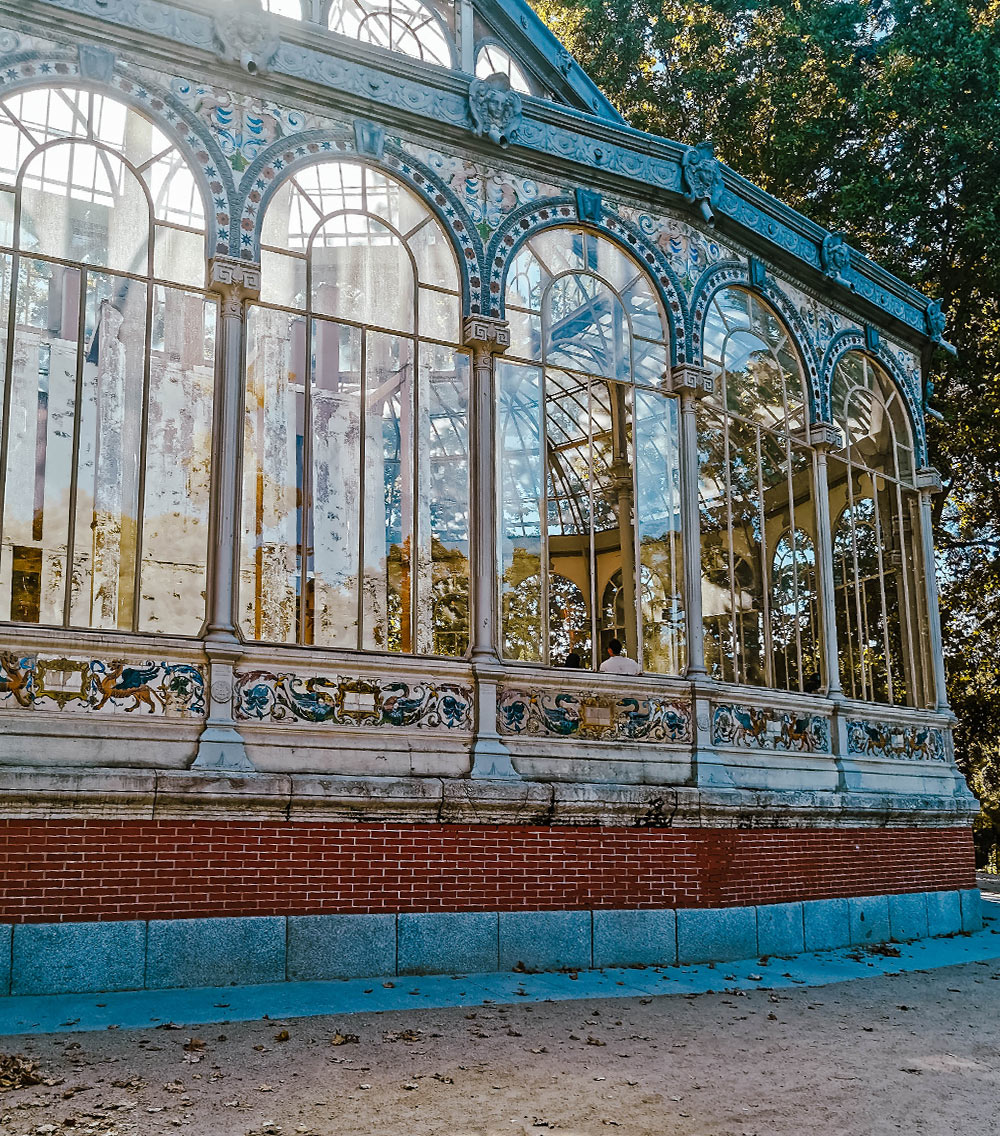
Parque del Retiro, also known as Retiro Park, is a large public park located in the heart of Madrid. It is one of the most popular tourist attractions in the city, and also one of our favorite places in Madrid! The park was originally created as a royal garden in the 17th century and was opened to the public in the late 19th century.
There are many things to see and do in Retiro Park. You can stroll through the gardens and admire the numerous fountains, statues, and monuments. There is also a large artificial lake where you can rent rowboats, as well as a number of cafes and restaurants. Some of the must-see attractions in Retiro Park include the Crystal Palace, a beautiful glass building that houses changing exhibitions, and the Rose Garden, a picturesque area filled with colorful blooms.
The park is open daily from early morning until late at night, and admission is free.
Casa Alberto is a historic restaurant located in the Huertas neighborhood. It is one of the oldest restaurants in Madrid (open since 1827).
The restaurant is famous for its traditional Spanish cuisine. Do not miss the chance to try Cocido Madrileño, a hearty stew made with chickpeas, vegetables, and various types of meat.
Casa Alberto is also well-known for its extensive selection of wines and spirits, with a particular emphasis on Spanish wines. The restaurant has a cozy, traditional atmosphere.
It is a Michelin-starred restaurant located founded by chef Diego Guerrero in 2014. It quickly gained a reputation as one of the top restaurants in the city.
It provides a contemporary and inventive spin on classic Spanish cuisine. It has an open kitchen and a chef’s table available for those looking for an engaging dining experience.
It was named as one of the “World’s 50 Best Restaurants” in 2019.
Chef Abraham Garcia, who is known for his innovative and avant-garde approach to classic Spanish cuisine, founded it in 1973.
The restaurant’s cuisine combines traditional Spanish meals with more avant-garde, experimental tapas, with an emphasis on utilizing premium, local products. The restaurant also offers a large wine selection, with a focus on Spanish wines.
The inside of Viridiana is colorful and character-filled, with pieces of art, antiques, and other unusual furnishings. It’s a popular choice for special events and romantic evenings because of the sophisticated and classy ambiance.
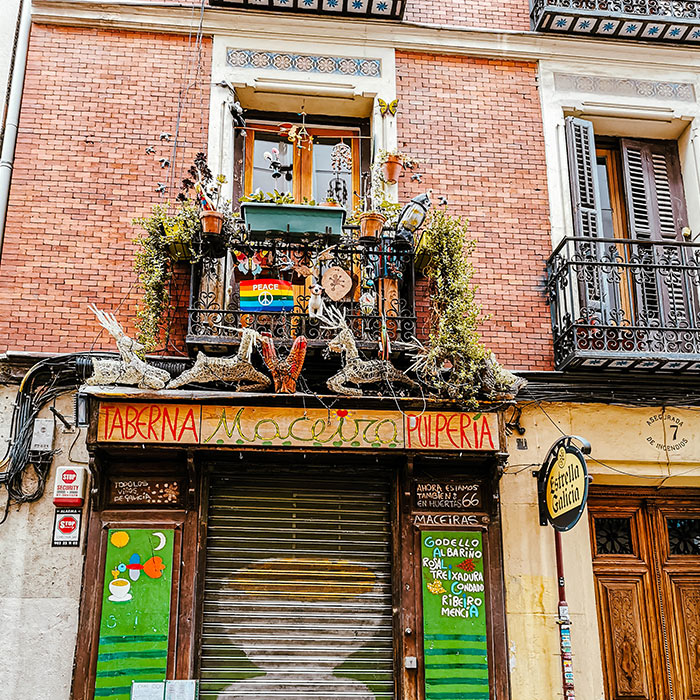
There are a lot of accommodation options in Madrid. From budget-friendly apartments to 5-star luxury hotels.
We were in Madrid at the end of our big 4-week road trip in Spain (end of July). As in the other areas we visited, it was too hot for us. So the first thing to keep in mind regarding your visit is the weather.
The best time to visit Madrid is during the spring (March-May) and the fall (September-November). During these seasons, the weather is mild and pleasant.
If you are into festivals consider that Madrid hosts many festivals and events throughout the year, such as the San Isidro Festival in May, the Gay Pride Parade in June, and the Madrid International Film Festival in November.
If you do not like crowds keep in mind that Madrid can be very crowded during the peak summer months (June-August), as this is when many people take their summer holidays. If you prefer fewer crowds, it’s best to avoid visiting during this time.
Regarding budget, you should consider that Madrid can be expensive during the peak travel season, so if you’re traveling on a budget, it may be best to visit during the off-peak season when prices are lower.
There are a lot of things to do in Madrid and also around Madrid. So we would definitely suggest taking a day trip to one or more destinations in the area.
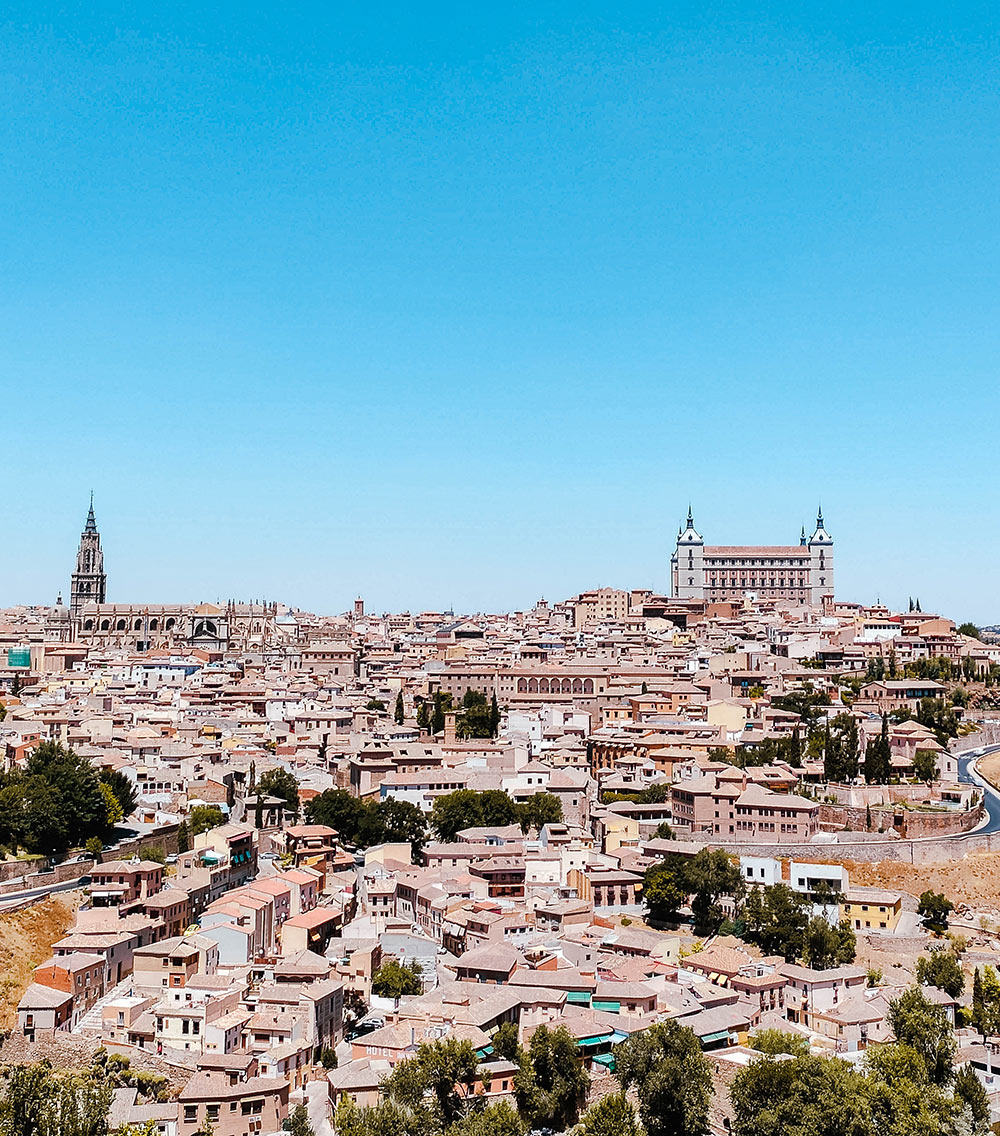
Toledo is located about 70 kilometers (43 miles) south of Madrid. You can reach Toledo by various means of transportation such as trains, buses, or car.
By train, the journey from Madrid to Toledo takes around 30-40 minutes while driving to Toledo from Madrid takes around 1 hour.
The city’s well-preserved historic center is a UNESCO World Heritage Site and some notable landmarks include the Toledo Cathedral, the Alcázar of Toledo, and the Monastery of San Juan de los Reyes.
Corral de la Morería and Cardamomo are both popular venues in Madrid to experience the art of flamenco.
Corral de la Morería was founded in 1956. Located in the heart of the city’s historic center, it has hosted performances by some of the biggest names in flamenco. The shows are typically accompanied by live music.
Cardamomo is located in the vibrant neighborhood of Las Letras and is a more intimate venue that offers nightly flamenco performances. The venue is known for its high-quality shows.
Both venues offer dinner packages for those who want to enjoy a meal before or after the show.
If you’re looking for high-end shopping in Madrid, the Salamanca neighborhood is definitely worth a visit. There are several designer stores and high-end brands present in the Salamanca district. Calle Serrano, the area’s major retail avenue, is home to a number of upscale stores, including Chanel, Gucci, and Louis Vuitton, among others.



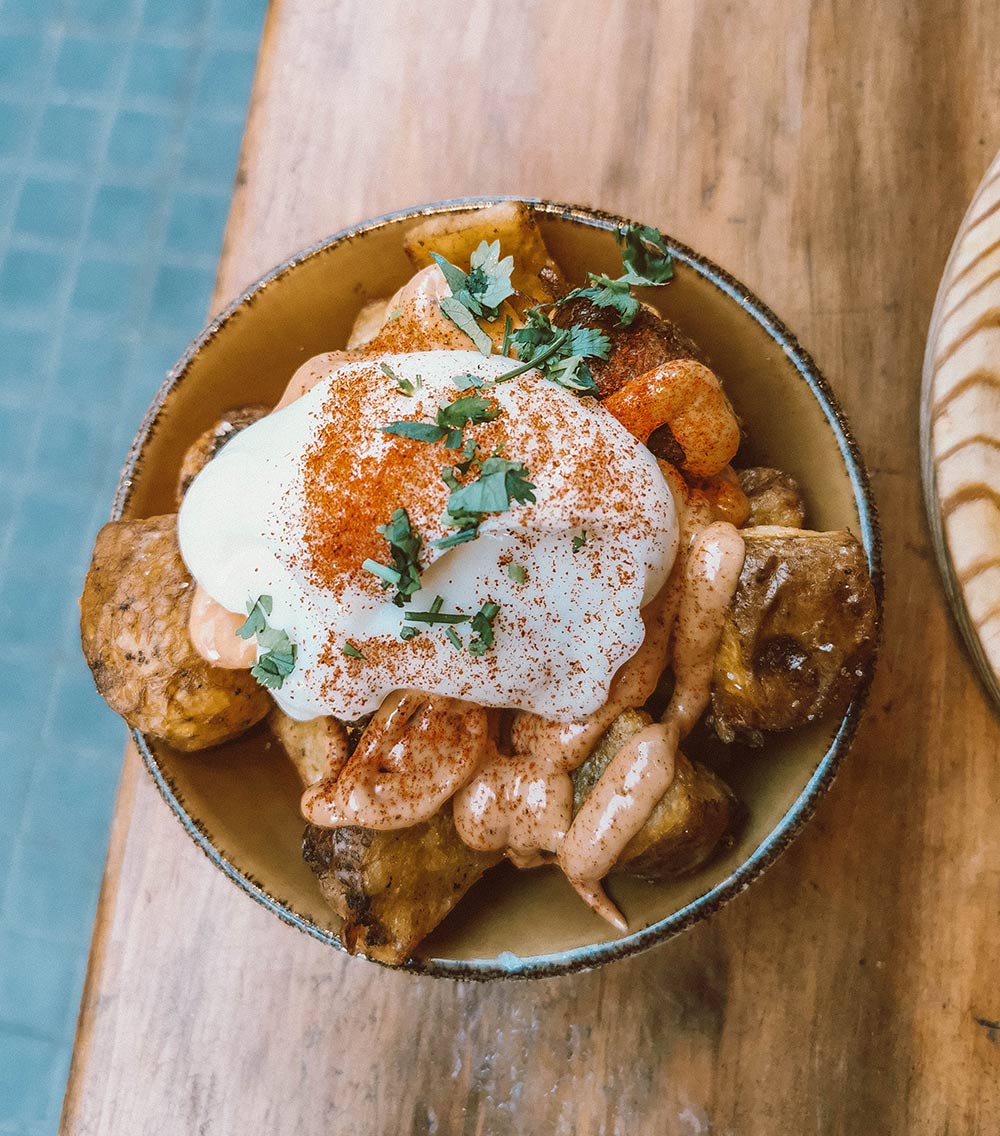



No Comments